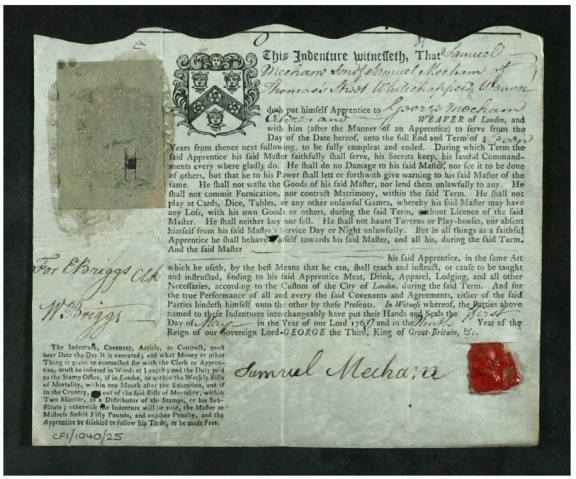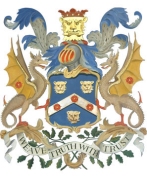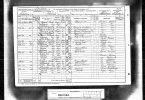First an apology to email subscribers of this blog. About a week ago you’ll all have received an unfinished and inaccurate version of this post. I clicked ‘Print’ instead of ‘Preview’ and Whoops…….unfortunately the deed was done!
I deleted the offending post on WordPress immediately, but unfortunately there was no way to retrieve the emails that had automatically been sent.
Here is the completed post that is now accurate and ready for you to read.
So far ‘Who was Fanny Yates?’ has been about my maternal grandmother’s ancestors, on her father’s side. My maternal grandmother was May Ethel Yates and her father was Edward Cavendish Yates. His father is still unknown but his mother, Fanny Yates and her likely ancestors are shown below.
Click image to enlarge
My next few posts will still be about the ancestors of my maternal grandmother, May Ethel Yates, but now I’ll be focusing on her mother’s side of the family. As other family members and readers of this blog may already know, her mother’s maiden name was Priscilla Jane Mecham. I’ve managed to trace this line of my family back to my 5th great grandparents Samuel Mecham and Caroline Mechendall.
Samuel Mecham was born during the reign of either Queen Anne of Great Britain or King George I, I’m not certain which. The only possible birth match I’ve found for him so far is for a Samuel Meakham who was baptized at St. Andrews Holborn in 1711. His father was recorded as a ‘gentleman’ named John Meakham and his mother’s name was not recorded (implying illegitimacy). This birth date makes Samuel a little older than I would have expected so, although it may be the best match, it’s probably not the right one. Another possibility is that Samuel was born in Ireland or Europe, but so far I haven’t managed to find records of his family’s arrival at any English port.
Even though I’m unsure about Samuel Mecham’s parentage, I do know for certain that this Samuel and his descendants, were my ancestors, and were originally weavers by trade. At least two if not more generations of the family lived in Thomas’ Street, Whitechapel during the eighteenth century. The earliest records I found of them living at this address were the apprenticeship papers of one of his children. His son, also called Samuel Mecham, was apprenticed to George Mecham, Weaver of London in 1769 at the age of 14.
“This Indenture witnesseth, That Samuel Mecham son of Samuel Mecahm of Thomas’s Street Whitechappel Weaver doth put himself Apprentice to George Mecham Citizen and Weaver of London”.

Samuel Mecham 1 May 1796. London, England, Freedom of the City Admission Papers, 1681-1925.
Source Citation: London Metropolitan Archive; Reference Number: COL/CHD/FR/02/1036-1042.
Source Information:
Ancestry.com. London, England, Freedom of the City Admission Papers, 1681-1925 [database on-line]. Provo, UT, USA: Ancestry.com Operations, Inc., 2010.
Original data: Freedom admissions papers, 1681 – 1925. London, England: London Metropolitan Archives. COL/CHD/FR/02.
I’m fairly certain that George Mecham, named as the master in the document above, was the young Samuel’s older brother (i.e. also son of Samuel Mecham Snr.) who was about 25 in 1769. George had previously been apprenticed to a John Deare “citizen and Weaver of London” from 1760 to 1767. The name of George’s father looks like James in the indenture below, but on closer inspection it is in fact Samuel.
“This Indenture witnesseth, That George Mecham son of Samuel Mecham of the Parish Of St Mathew Bethnal Green Weaver doth put himself Apprentice to John Deare Citizen and Weaver of London”.

George Mecham 4th August 1760. London, England, Freedom of the City Admission Papers, 1681-1925. Source Citation: London Metropolitan Archive; Reference Number: COL/CHD/FR/02/0955-0962.
Source Information:
Ancestry.com. London, England, Freedom of the City Admission Papers, 1681-1925 [database on-line]. Provo, UT, USA: Ancestry.com Operations, Inc., 2010.
Original data: Freedom admissions papers, 1681 – 1925. London, England: London Metropolitan Archives. COL/CHD/FR/02.
Almost as varied are the possible geographical origins of the weavers working in Whitechapel at the time Samuel Mecham lived in Thomas’ Street. It’s possible that his ancestors were among the French Protestant (Huguenot) silk weavers who fled to England from France in 1685, although Mecham doesn’t sound like a particularly French name and isn’t mentioned on the official Huguenot list. On the other hand, they may have been among the Irish people who arrived slightly later – I have found quite a few records of Mechams from Ireland and I think the name Meakham (mentioned above as a possible ancestor) is almost certainly an Irish name.
Going back even further in time, the Mechams could have been part of an earlier group that made a positive impact on the weaving industry in England long before the Huguenots and Irish arrived. Many of the French and Flemish protestant refugees who settled in England in the early 16th century were silk workers, and they brought with them new skills and materials that the weaving industry in London benefited from – Londoners took up silk weaving and many foreign weavers were absorbed into the Weavers Company.
Below is a short extract from British History Online about the silk weavers of East London, but read their whole section on SILK WEAVING if you have time.
The origin of this important industry as located in Spitalfields dates from the revocation of the Edict of Nantes by Louis XIV in 1685, when the French Protestants, driven by persecution from their own country, took refuge in England in large numbers…… A great body of these refugees occupied a large district which is usually called Spitalfields, but which includes also large portions of Bethnal Green, Shoreditch, Whitechapel, and Mile End New Town.
More information can also be found on Wikipedia under the heading Spitalfield Riots. I’ve copied a section of the info here:
Irish weavers came slightly later, but by the middle of the 1730s there were many people from Ireland, or of Irish origins, working in the Spitalfields silk industry.
Relations between the groups were not always good. There were times when the Irish weavers were blamed for working for too little money and bringing down the rates of pay. The conflict of 1769 cut right through the middle of both communities, the Huguenots and the Irish. Journeymen were involved in a struggle to keep the rates that the master weavers paid for their work from falling below a subsistence level. They organised in unofficial, and highly illegal, trade unions. ‘Silk-cutting’, slashing up a weaver’s work, was used as a punishment for weavers who accepted a lower rate of pay, or master weavers who refused to pay money into the funds that were collected to support union activities.
It was only four months after our Samuel Mecham (Jnr) started his apprenticeship as a weaver with his brother George in 1769 that ‘an attempt was made to arrest an entire meeting of weavers. ‘An officer with a party of soldiers invested an alehouse, the Dolphin, in Spitalfields, “where a number of riotous weavers, commonly called cutters, were assembled to collect contributions from their brethren towards supporting themselves in order to distress their masters and oblige them to advance their wages[3]“. Meeting with resistance, the soldiers fired on the weavers and killed two, and captured four. The remainder fled and lay concealed in cellars of houses and in the vaults of the churches throughout the night of terror not only for them but also for their womenfolk.’ Read more on Wikipedia.
Before I began my research into the Mechams I was under the impression that they would be a reasonably ‘well to do’ family, simply because that’s what I’d been led to believe by the snippets of information I’d gleaned from my family. So when I first discovered that Priscilla Jane’s father, Thomas William Mecham, was a Weaver with East London connections, it was a surprise. Given the location and trade, I jumped to the naive conclusion that the family would be poor – nowadays, if you search online for the history of Thomas Street, Whitechapel you’ll only find references to the workhouse and the poverty that existed there.
To find the location of Thomas’ Street today, you’ll need to ‘Google’ it’s new name Lomas Street – it looks just a little different from the street where Samuel and his family lived and worked in the 18th century! See the map below for Thomas’ Street in 1795.
The detail I feel I’m missing at the moment is whether or not any of the Mecham family were Master Weavers. I know that several of them were apprenticed and after seven years became ‘Freemen of the City’, but that would only make them journeymen, not masters able to employ other weavers. Could a journeyman take on an apprentice? Does the fact that the apprentice weaver had a ‘master’ make that master a ‘master weaver’? I don’t think so but I’m not sure.
I’m also not sure what Thomas’ Street was like in 1796. Descriptions I’ve found have been of people living in extremely poor circumstances but I think this was some time after the Mecham family were there.
If anyone knows the answer to these questions please do leave a comment at the bottom of the blog or email me via the contacts page.
Having rearranged my thoughts to incorporate this new information about my family, I then discovered some facts that, once again, came as a surprise.
I’ll leave them with you until my next post when I’ll fill out the details…..
 Key: Wheeler Street & Phoenix Street King Street Thomas’ Street
Key: Wheeler Street & Phoenix Street King Street Thomas’ Street
- Someone called Mecham (no first name or initials given) crops up regularly from 1798 until at least 1827 in the London and England Land Tax records. He had either bought the long term leases or the freeholds of several plots of land and several houses in Wheeler Street, Phoenix Street and King Street in Spitalfields.
- Thomas William Mecham, my great great grandfather ended up owning more than one house.
- Although like his forefathers he had been apprenticed as a Weaver, in his later years Thomas became a Licensed Victualler and at least part-funded his brother-in-law to start up a new pub in Brick Lane on the corner of Phoenix Street.


![Samuel Mecham Freedom of the City Admission 1769 Samuel Mecham Freedom of the City 1769 Source Citation: London Metropolitan Archive; Reference Number: COL/CHD/FR/02/1036-1042. Source Information: Ancestry.com. London, England, Freedom of the City Admission Papers, 1681-1925 [database on-line]. Provo, UT, USA: Ancestry.com Operations, Inc., 2010. Original data: Freedom admissions papers, 1681 – 1925. London, England: London Metropolitan Archives. COL/CHD/FR/02.](https://fannysfamily.files.wordpress.com/2013/08/samuel-mecham-f-o-city.jpg?w=120)
![George Mecham Freedom of the City Admission 1760 George Mecham Freedom of the City Admission 1760. Source Citation: London Metropolitan Archive; Reference Number: COL/CHD/FR/02/0955-0962. Source Information: Ancestry.com. London, England, Freedom of the City Admission Papers, 1681-1925 [database on-line]. Provo, UT, USA: Ancestry.com Operations, Inc., 2010. Original data: Freedom admissions papers, 1681 – 1925. London, England: London Metropolitan Archives. COL/CHD/FR/02.](https://fannysfamily.files.wordpress.com/2013/08/george-mecham-freedom-of-the-city.jpg?w=123)















If anyone gifted in the business of writing on wordpress.com can help me get rid of this strange half image at the bottom of my blog, I’d be really grateful!
Thanks to the kind person who helped me sort out the image problem at the bottom. Yes – it was obvious once I knew how 😀
I looked into your line some time ago, as I’ve been seeking the origin of my own Mecham line from Athlone, co.Westmeath, Ireland (from 1690). Mine were almost certainly English and protestant. They were a mix of farmers, merchants, distillers, cordwainers; there was another Mecham group in Dublin around 1700 that were weavers. My Mechams were not Huguenot, but intermarried with them. I’ve been trying to link them to an English family line.
My read of your line back from: Thomas William Mecham (ch.28 May 1823), son of Thomas Mecham (17 Oct 1784) victualler, son of William Mecham (17 Dec 1758) china dealer Shoreditch, son of Samuel Mecham (est 1720) of Whitechapel and I’m confident he was the son of Roger Mecham (est 1690) weaver of parish of St Dunstan, Stepney. See in IGI Samuel names a son Roger, assumingly after his father.
Roger snr died 1746 and left a will. It does not name children, but he had sons and daus:
transcript:
Will of Roger Mecham
In the Name of God Amen: I Roger Mecham of the Parish of St. Dunstan Stepney in the County of Middlesex Weaver being in bodily health and in perfect mind and memory and understanding but to prevent disputes after my decease do make and ordain this to be my last will and testament in manner and form following that is to say first and principally I recomment my Soul to God and my Body to the Earth to be revently (sic) interred at the discretion of my Executrix hereinafter named and as to my wordly goods I shall dye possessed of I give and dispose thereof as follows viz:
Imprimis [in the first place] I give and bequesth unto each and every of my children either male or ffemale that shall be living at the time of my death the sum of one shilling each and nothing else and after the payment of my just Debts Legacies and ffuneral charges all the rest residue and remainder of my Real and personal estate whatsoever I give and bequeath unto my wellbeloved wife Elizabeth Mecham to be by her enjoyed during the term of her natural life and also to be by her disposal either by Will or as she pleaseth. But in case my said wife dyeth without making any Will then what Goods Chattels and Credits shall be left and in her possession I will should be divided between the children lawfully begotten of her Body then living share and share alike and do hereby ordain and appoint my said Wife to be the sole Executrix of this my will and revoke any former Wills by me made declaring this to be my only true last Will and testament and putting my hand and seal thereto the sixteenth day of June in the year of our Lord 1746 – Roger Mecham – Signed Sealed and delivered published and declared to be the last Will and Testament of the Testator in the presence of Antho Dennison John Mitchell
THIS WILL was proved at London before the Worshipfull George Lay Doctor of Laws Surrogate of the Right Worshipfull John Bettesworth also Doctor of Laws Master Keeper or Commissary of the Prerogative Court of Canterbury lawfully constituted the fourth day of September in the year of our Lord one thousand seven hundred and forty six by the oath of Elizabeth Mecham widow the Relict of the deceased and Executrix named in the said will to whom administration was granted of all and singular the Goods Chattels and Credits of the said deceased being first sworn to administer. Exd.
Thank you so much for this information. I should apologize for not responding before. I started researching what you sent and got so involved – it sent me off on a whole new journey! You’ll see I haven’t written here in ages – I am currently very involved in other things and am still battling with the large numbers of my ancestors who appeared to have live in Spitalfields and the East End of London. In particular I must thank you for the excellent transcription of Roger’s will.
I’m very glad you have been pointed in the right direction and have found some useful information. I know what you mean about too much! I did know about the Huguenot Threads festival, but unfortunately wasn’t able to get to any of the events I wanted to attend. I actually found your blog through the Town House facebook page and their info about the Map – what a lovely project 🙂
Best wishes
My families lived in the same area 🙂
From the Registers of the French Church, Threadneedle Street, London Vol iv.I found this: –
1791 CARON.—Janv. 23. Guillaume Nicolas f. de Guillaume C[aron]. et Elizabeth Mecham. P. Nicolas Guillaume Caron. M. Anne Caron, née Somerset. Né 10 Déc.
I cannot find the name Mecham before that date in those specific records,.so it could be that you are right and your family intermarried,.but there are many other records from other French Churches in London and elsewhere that I do not have at the moment.
Please note that the “official” list of names you quote from above is the list of the American Huguenot society and only relates to confirmed names of those who are members of it (so most will only be those Huguenot families who subsequently emigrated to America), so it is not a full list by any means. You may do better to contact the UK Huguenot Society http://www.huguenotsociety.org.uk or the Irish Section http://www.huguenotsinireland.com
I wish you every success with your research
Many thanks for this Susan. You’ll see I haven’t been blogging much of late. I seem to have almost too much information to know where to start how to write it down! Are you aware that there is an interesting Festival on in Spitalfields at the moment called Huguenot Threads http://www.huguenotsofspitalfields.org/huguenot-threads-2014.html and a Huguenot family history map is being created at the Town House http://www.townhousewindow.com/visit/?p=295. Thanks to the lovely people at The Town House in Spitafields, I’ve now got the link to the UCL info which I could not get to from the UK Huguenot society website – http://www.huguenotsociety.org.uk/…/docs/FRF_website.pdf Mecham is a name that IS mentioned. I am still floundering around trying to make all the people I have found connect up. When I get to a satisfactory place – I will post what I have found. Thanks again for your comments here.